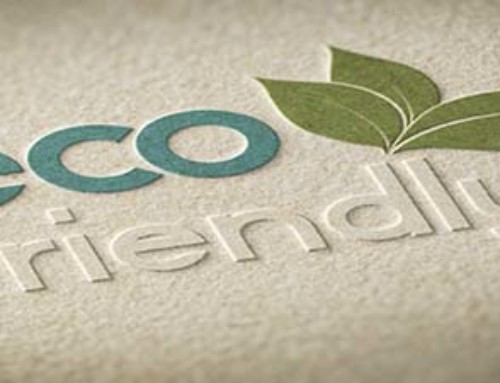Printing on plastic is complex since the materials used to bring messages to life are often more durable and hardier. The trade-off? These products are made to last. Because of the unique nature of this type of printing, a lot of work goes into turning an idea into a final product.
“Typical ink on paper is pretty straightforward, but when you print on plastics the rules have to be rewritten every time,” explains Hopkins General Manager, Roy Waterhouse.
So, how do you print on plastic, and why should you? As experts who have worked for decades in the printing industry, we put together this guide to help you figure out what materials are most commonly used, which work best with certain products, and the best printing methods for the job depending on what you’re looking to make.
Reasons for Printing on Plastic
Even though the process of printing on plastic is more difficult than printing on paper there are numerous draws to using this type of material. For one, plastic is much more durable than paper. A shelf talker placed along a store aisle may be at risk of being hit accidentally as shoppers navigate an area with their carts or reach for products on a shelf. While paper products may last only a few months due to wear and tear, plastic products can last for years.
Plastic pieces are also ideal for outdoor products like yard signs since they’re weather resistant. The plastic material helps keep signs from deteriorating, ensuring brands and businesses continue to appear professional and trustworthy. This longevity is important, especially for products that will be staying outdoors permanently or for long periods of time, such as a sign with the company’s name or an A-frame showing off a business promotion or deal.
“If you’re printing something that’s going to be out in the weather, you’re going to want to put it on plastic,” says Roy Waterhouse. “It could be rained on, but when the sun comes out the next day and it dries it’s not damaged.”
The texture of the plastic material is also memorable. Many brands are expanding their marketing strategy to include sensory marketing, which is using all five human senses to promote the brand. That includes touch, which is where printing comes into the picture.
“When somebody hands you a plastic material it has a distinct texture and thickness,” explains Roy. “So, you have a brand image in your mind that is durable, high-quality, and will last a long time.”
Types of Materials Used to Print on Plastic
Many different materials can be used to print on plastic. A variety of factors can influence which type of material to use ranging from its print quality and finish to the weight of the product. The cost-effectiveness of the product may also have an impact, especially if a business is looking for something short-term or temporary. Overall, the three most popular materials to print on plastic are:
- PVC (polyvinyl chloride)
- Acrylic
- Coroplast
All three are made with synthetic substrates and are used for the majority of plastic printing projects that we do here at Hopkins. However, there are other types of plastic materials used for printing including foamcore, which is a paper/plastic hybrid, polystyrene, and acrylonitrile butadiene styrene (ABS) just to name a few.
Plastic Printing Material: PVC
PVC is a go-to material when printing on plastic. It’s commonly used for retail point-of-purchase (POP) signs and displays such as end cap signs, floor displays, or sidewalk easels because of its hardiness and ability to outlast paper products. There are different forms of PVC for printing that each have their own unique advantages whether it be a more flexible or rigid product you’re looking to create. PVC is sometimes also used for certain yard signs with metal frames, but coroplast is a more common material for that type of product.
Plastic Printing Material: Acrylic
Since acrylic is most often clear, it is usually used to print a design that you’re able to see partially through. Acrylic can be used to make specialty, custom signs, and the material offers a sleek, professional look that can often be backlit to show off the printed words or design. Plastic signs made of acrylic include signs outside retail stores or office buildings, with a company logo and/or mission printed on them. For example, one project with acrylic we just completed here at Hopkins was signs with a company’s corporate values on them that they’re planning to put up in their cafeteria.
Plastic Printing Material: Coroplast
Known as “plastic cardboard,” coroplast is a printing material that’s lightweight, lower cost, and has a longer lifespan. It’s commonly used for yard signs since it has ridges in it, making it easy to use metal stakes and slide a coroplast yard sign onto them. However, it can be used for a wide range of products including some more out-of-the-box ideas such as influencer marketing
Step-by-Step How to Print on Plastic
Since many products printed on plastic can be customized, there are a lot of steps to follow to ensure printing is done efficiently and effectively. From start to finish, a rush job could be completed in a matter of hours, but the typical turnaround for a plastic printing project is about 3-4 days. From the first meeting to the shipment of the final product, the process takes about a week and a half. Of course, the timing of a project could be shorter or longer depending on the level of customization required.
Here is a step-by-step scenario of how to print on plastic if you were to request a custom project:
1. Plan and engineer the project: The first step is to plan out and engineer how the project will be brought to life. This will be the time when you meet the printer and go over your vision for the product, the materials you’d like to use, and the printing method. The two most popular plastic printing methods we do here at Hopkins are:
- Screen printing: This type of printing is done by pushing ink through a mesh screen and onto plastic material underneath. It is more of a manual process that is also unique from other printing methods because all colors are printed at the same time (including white).
- Digital inkjet printing: Sometimes referred to as flatbed digital printing or UV sheet digital printing, this printing method uses computers to bring projects to life. The project design is uploaded to a program that will translate it into a code so the printer will know where to drop microscopic ink droplets onto the plastic material to form the design.
2. Custom estimate for the project: The next step will be for the professional to review the project and provide an estimated cost.
3. Digital art sent from customer to printer: Once the project is approved, the customer will send over the digital art for the project (the logo, design, etc.) to the printer.
4. Pre-flight & pre-press process: From here, the printer will check to make sure the digital art file is designed and built in a way that works with the printing machine.
5. PDF proof or live sample: After checking to make sure everything will print correctly, the printer will put together a PDF proof or print an actual live sample of the product to share with the client to ensure everything looks good to go before moving forward with the rest of the printing project.
6.Project completion: After getting approval from the client, the printer will then create the rest of the project and ship it out.
Using a Printing Professional for Printing on Plastic
Printing on plastic is no easy task. Unlike standard printing, it demands specialized materials, advanced technology, and skilled expertise to get it right. It requires cutting-edge equipment and knowledge of how to create plastic products that not only look stunning, but leave a lasting impression.
“Partnering with a professional makes all of the difference,” says Roy Waterhouse. “They’ve navigated countless variables over the years, resolving challenges you may encounter. With hundreds of brands, materials, machine types, and processes out there, a seasoned professional brings decades of experience, ensuring every detail is expertly handled.”



